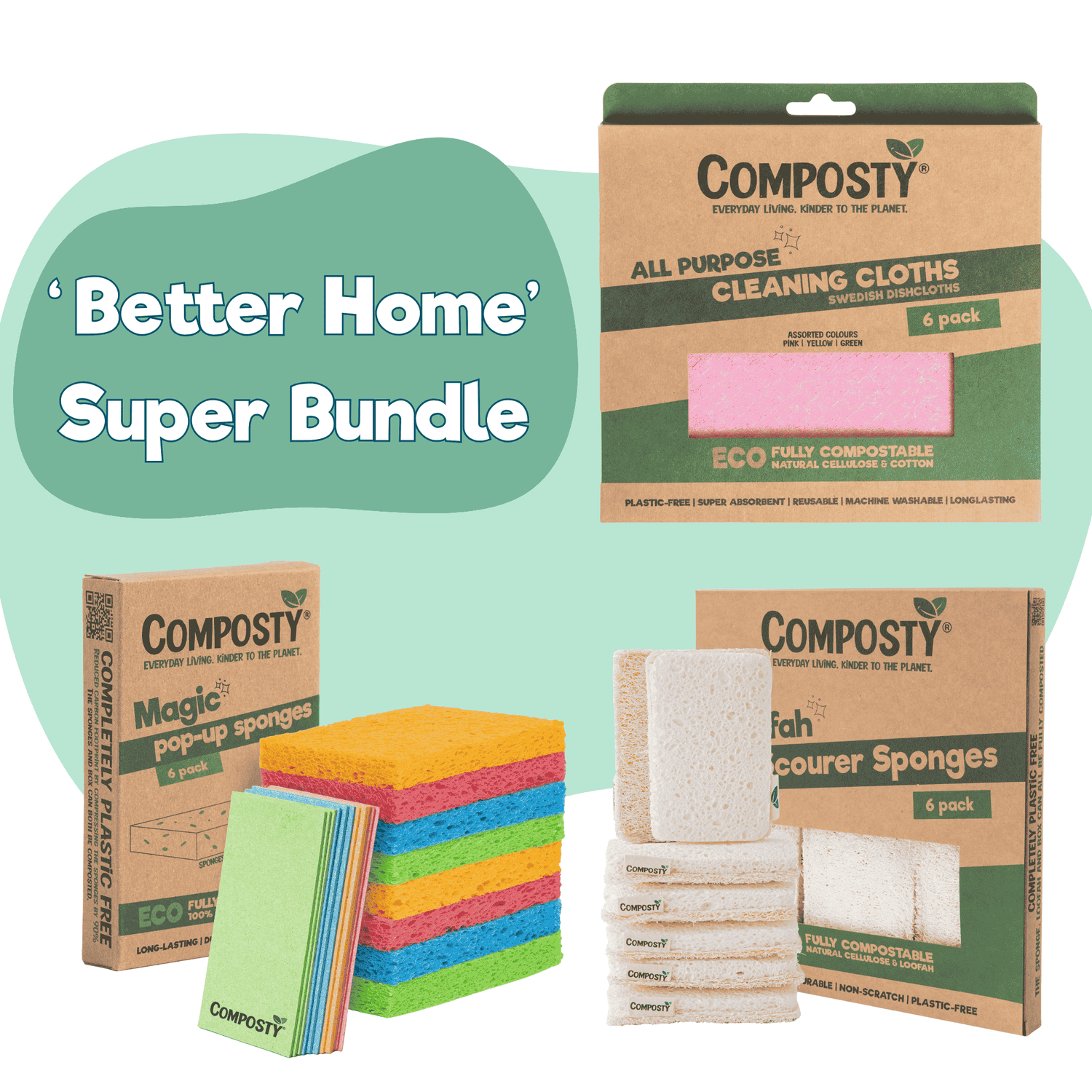
Eco Sponges & Greenwashing: Polyester, Labels, and Loofah
Is your “eco” sponge actually eco?
Lots of so-called eco sponges hide plastic. Some even list polyester on the box while also saying “biodegradable.” Polyester is a plastic. In normal home conditions it does not biodegrade, so pairing “polyester” with “biodegradable” on the same pack is—at best—confusing. The short video below shows a bestseller on Amazon making exactly that claim.
Why “coconut” and “sisal” scourers are often part-plastic
Coconut husk and sisal fibres don’t grow as neat, flat sheets you can glue onto a sponge. To create a perfect, uniform pad, manufacturers commonly:
- Shred the plant fibres into loose fluff,
- Blend them with polyester fibres (a plastic) for strength and shape, then
- Set the mix with synthetic adhesives so it can be moulded into a tidy rectangle.
That composite construction is why many coconut/sisal pads are cheaper, keep their shape, and—crucially—are not home-compostable. If a pack lists “polyester” (or avoids listing materials at all), you’re likely looking at a plant-plastic blend that can persist for years.
Common label red flags
- “Biodegradable” with no details (where? how long? home vs industrial?).
- No materials breakdown or no percentages.
- Eco imagery instead of specific, verifiable information.
What to choose instead
If you want a truly low-impact scrubber, look for plastic-free materials that work in their natural structure and have a clear end-of-life.
Loofah: why it’s different
- Loofah grows as a natural mesh. It can be cleaned, cut and stitched into a scrubby surface—no polyester filler required.
- Plant-based and home-compostable at end of life (cut into pieces to speed it up).
- Tough on grime, gentle on pans, and it air-dries quickly to help prevent smells.
Meet The Better Sponge: Loofah Dish Sponge · Magic Pop-Up Eco Sponges
FAQ
Is polyester biodegradable?
Polyester is a synthetic plastic. In normal home conditions it does not biodegrade like plant fibres do. That’s why a pack claiming “biodegradable” while listing “polyester” deserves extra scrutiny.
Are coconut or sisal pads always plastic-blended?
Not always, but very often, especially when they are cheap! Creating a perfectly flat, durable pad usually involves blending plant fibres with polyester and using glues to bind the shape. If a brand offers a plastic-free version, it should say so clearly and explain how it’s constructed and disposed of. In fact, we've not found one that is plastic-free yet.
What does “home-compostable” actually mean?
It means a product can break down in a typical home compost environment (ambient temperatures, aerobic conditions) without leaving persistent plastics behind. Look for simple instructions (e.g., “cut into smaller pieces”) and realistic timeframes.

